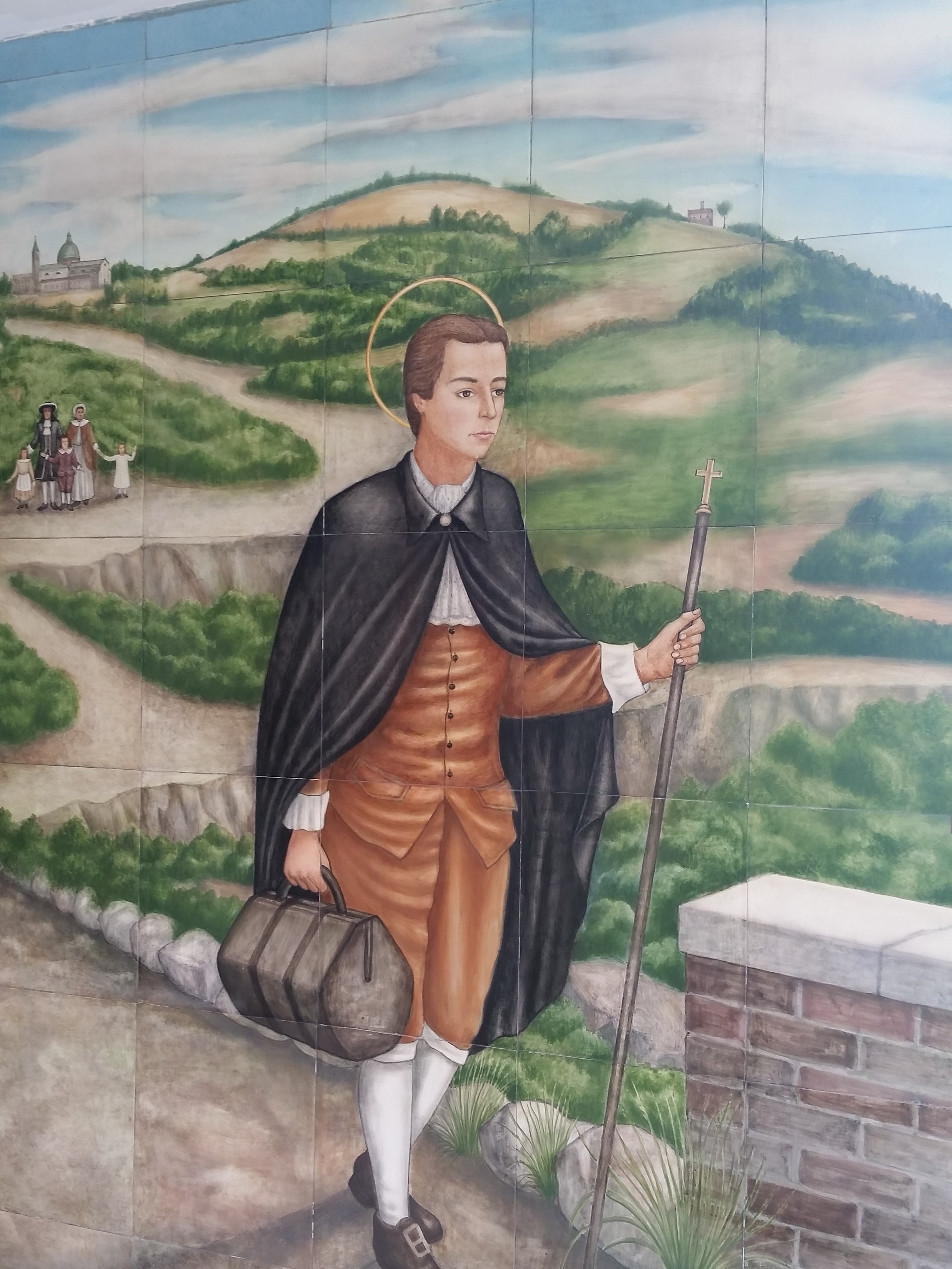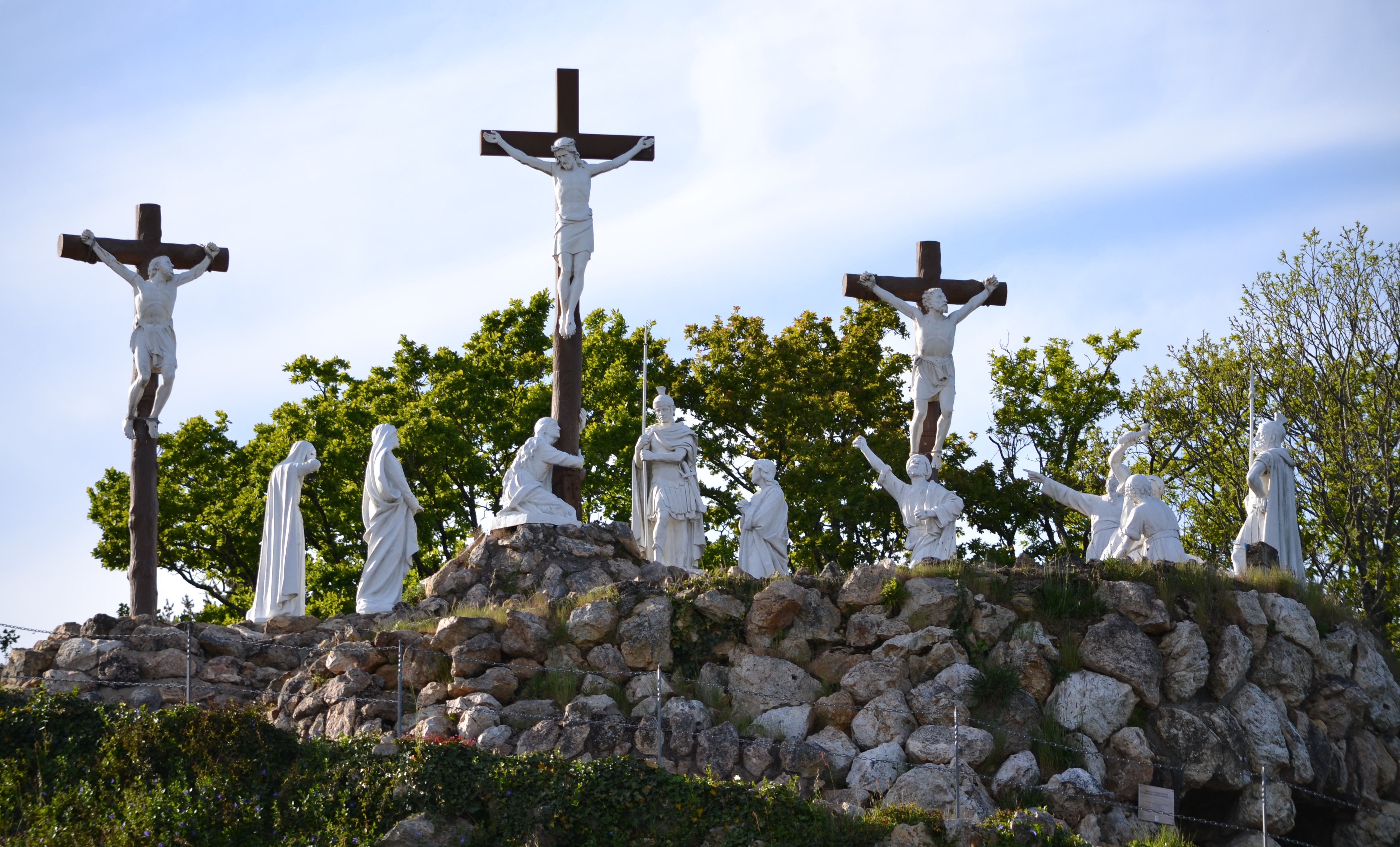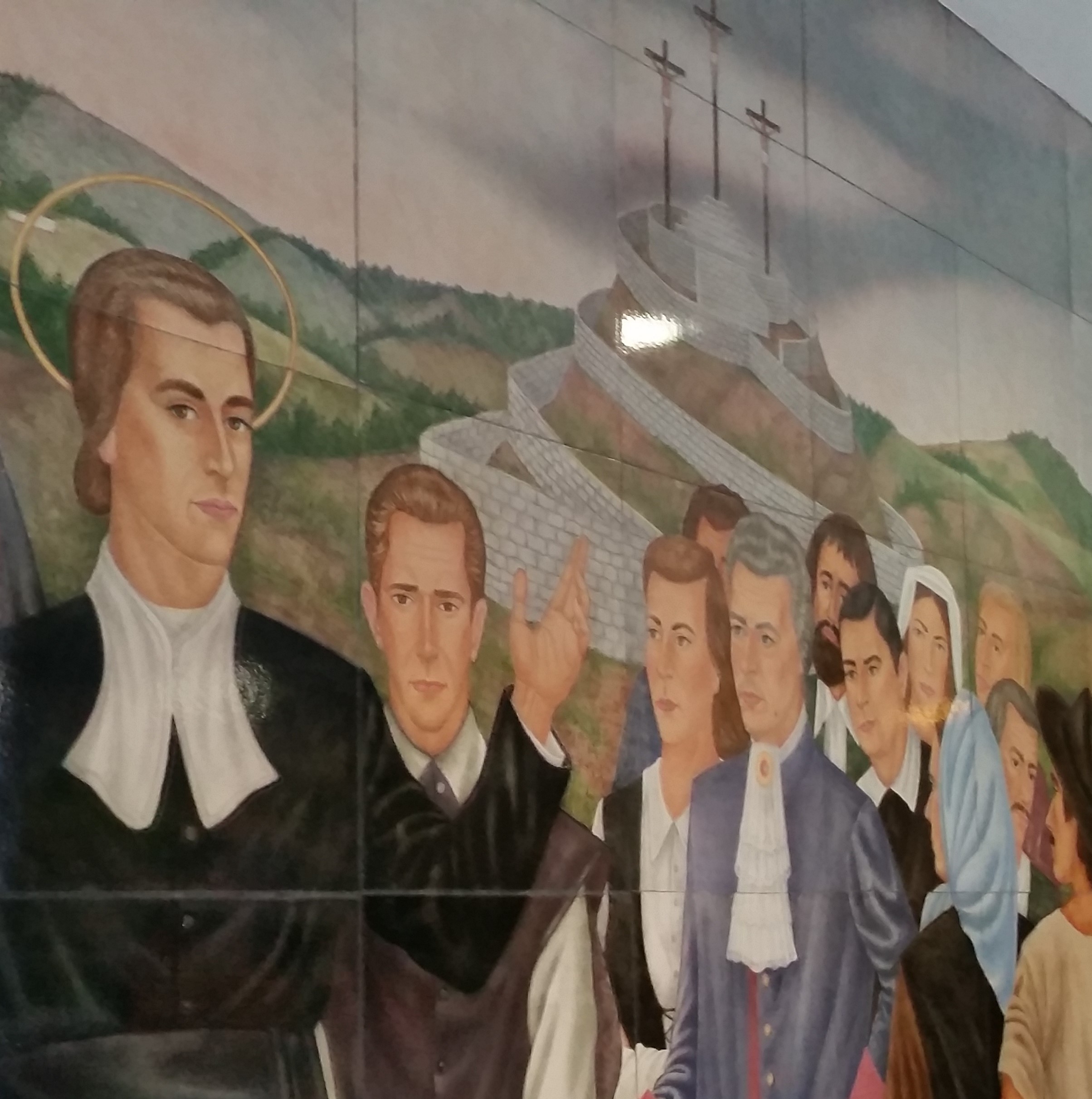Saint Louis Marie de Montfort
An Often Misunderstood Saint Part VIII: The Pontchateau Affair (continued)
Fr. Patrick Gaffney, SMM
A few days before the scheduled blessing of the Calvary of Pontchateau on September 14, 1710, Louis XIV communicated his command to destroy the Calvary to Mr. Torcy, the Secretary of State. He in turn sent it on to Mr Ferrand, the King’s agent in charge of ecclesiastical affairs in Brittany. With what glee he wrote to the Bishop Beauvau of Nantes:
“. . . His Majesty, having learned, Sir, that this Calvary is more fit to be a hideout for people of bad will than to entertain the devotion of people, has ordered me to write to you that his intention is that all that has been done be destroyed, and that the ditches be entirely filled with the earth taken from them and that the crosses, the figures of devotion and the other constructions be suppressed.”
The little sheriff of Pontchateau had won and far beyond his dreams! The price of white washing the walls of the Campbon Church was expensive indeed.
Bishop de Beauvau of Nantes had just learned of this royal decision when on September 13, he informed Father Grignion de Montfort through one of the parish priests of the area that the Calvary was not to be blessed on the following day as scheduled. Thousands, twenty thousand it is said, were gathered at Pontchateau to celebrate the blessing of this marvel of Brittany, the splendid, monumental new Calvary erected by one of their own, the Father from Montfort. It was a Sunday, September 14, 1710, the liturgical feast of the Triumph of the Cross. Two of the four renowned preachers originally scheduled to preach, gave their sermons, blessing or no blessing! And the day was a festive one, although Louis de Montfort was not there. He had left for the Bishop’s residence in Nantes immediately upon learning the previous late afternoon that there would be no blessing permitted. He and probably Brother Mathurin accompanying him, walked all through the night, arriving at six in the morning. The missionary pleaded with the Bishop to retract his order forbidding the blessing. Nothing was accomplished. The Bishop was adamant, as well he had to be in light of the order from Versailles. But for some reason, the full story was not then divulged to Father de Montfort.
He arrived back at Pontchateau on Monday, shortly before noon. Although the news of the Bishop’s refusal to permit the blessing upset the people, the missionary looked upon it as only a temporary delay; eventually, the shrine would be blessed. In the meantime, he had the joy of knowing that thousands of people would come to adore Wisdom crucified, for the Calvary, although not fully completed, was open to pilgrims. After a few days rest, Louis de Montfort set out on Sunday for a parish mission at the nearby town of St. Molf.
Father Olivier was no longer with him, for he had abandoned the Montfort mission team, reasons unknown. Immediately upon Montfort’s return from his all night journey to the Bishop’s residence in Nantes, Olivier left for Nantes, for good. Only a week later, he was called to the office of the Bishop and given a sealed letter to deliver personally to Father de Montfort at St. Molf. Olivier knew the contents of the note. Father Louis Grignion was forbidden to continue with the mission. Father Olivier, his ex-associate, would take his place. No longer would the missionary be permitted to preach or hear confessions in the diocese of Nantes. Blain, alone of all the early biographers and apparently from second or third hand sources, describes Olivier as gloating over the humiliation of Father de Montfort, the man who had dismissed him. It is more likely that Father Olivier, a priest of the Nantes diocese, was put in an impossible position by his bishop’s decision and either voluntarily or perhaps on orders of Beauvau himself, returned to diocesan duties.
Father Louis Grignion headed for the Bishop’s office in Nantes, hoping to clarify his status in the diocese. Not only did the Bishop repeat his order “no preaching, no confessions” – but also gave him the devastating news. “The Calvary must be destroyed, for the King has so ordered.” Moreover, the missionary was not to show his face again at Pontchateau since it was feared that his presence alone would spark a demonstration against the royal edict. All the elaborate plans of the Father from Montfort, all his dreams of a majestic Calvary at Pontchateau, a year’s work of hundreds of people to build the shrine, all were destroyed. Louis XIV had so ordered. Montfort’s enemies were gloating over their victory.
Louis Marie de Montfort, as was his custom when receiving a heavy cross, went on retreat. Since he was not ordered to leave the diocese, since he was not forbidden to celebrate Mass, he began several days of prayer at the Jesuit house in Nantes. He was already strangely peaceful, resigned to the mysterious Providence of God, “God has permitted me to erect the Calvary; He now permits that it be destroyed. Blest be His Holy Name. If it depended on me, that Calvary would last as long as the world but since it depends immediately upon God, may His Will be done, and not mine.”
On September 20, 1710, the Bishop of Nantes had written to the Jesuit confessor of the King, Father Le Tellier, asking him to use his influence so that Versailles would permit the restoration of the chapel of Mary Magdalene and the presence of a simple cross at the Calgary site, “to keep the people happy.” Father Le Tellier forwarded the request to Torcy. The response was no surprise. The Chapel could be restored, but no trace of the Calvary could remain, not even a cross. To calm the people, the Bishop himself had to be present at Pontchateau on October 12, when with great emotion, the life-size image of the crucified Christ was taken down from the cross. Since the local government had ordered the same people who constructed the shrine to tear it down, work proceeded at a snail’s pace. Once the hill had been leveled by about a third and the earth used to partially fill up some of the moats, demolition ceased. There were no funds for the project left in the state treasury and more importantly, there was no spirit whatsoever for the task among the good people of the area.
Strangely, Louis de Montfort decided to stay in Nantes even though forbidden to preach or hear confessions. Father Oliver’s widowed mother gave him shelter. His zeal was undiminished: he began a hospital for incurables (thanks to the generosity of Mrs. Oliver), assisted heroically in the rescue efforts during the floods of February 1711 and typically, got himself arrested when he joyfully shattered a gambling table which was the occasion which was occasion for intense fighting and constant cursing. The love of the population for Father from Montfort was stronger than ever. When the police tried to drag him to prison, they were over powered by crowds of common people, eager to rescue their hero.



Tile mural depicting a scene of St Louis de Montfort’s Life and Pontchateau Today and at the Time of Fr. de Montfort
This mural (image #1) appears immediately outside the chapel in Montfort’s Spiritual Center. This first scene depicts Louis Grignion’s leaving to begin his studies in Paris. Louis Grignion walked to his destinations and this journey was no different. It is over 250 miles between the towns. He would give up his clothes and money along the way.
The second image is how Pontchateau looks today. The Calvary scene built by the town and Fr. de Montfort over 110 years ago, then by order of the bishop, was dismantled, was rebuilt years later. Several of the crosses and characters at the time of the initial build were saved and, years later, used during the rebuilding.
The third image is actually a tiled mural of Fr. de Montfort at Pontchateau and is located outside the Chapel of Montfort Spiritual Center.
He was already strangely peaceful, resigned to the mysterious Providence of God, “God has permitted me to erect the Calvary; He now permits that it be destroyed. Blest be His Holy Name. If it depended on me, that Calvary would last as long as the world but since it depends immediately upon God, may His Will be done, and not mine.”
But the antagonism toward Louis de Montfort on the part of some civil authorities and of some priests seemed never to end. Ferrand sarcastically wrote to one of his delegates overseeing the destruction of the Calvary, “If you leave a few walls, we’ll use them to lock up Grignion.” He mockingly called the missionary “that big fool.” And opinion was divided, especially among the clergy, in judging the prudence of Father de Montfort. “Its his own fault, he didn’t use common sense,” or “ He went way beyond what he could handle,” were typical remarks now that Calvary was destroyed.
It was clear the Bishop wanted Louis de Montfort to go away. Perhaps on the Bishop’s orders or perhaps on his own, Father Louis Grignion walked away from Nantes. It was the beginning of Lent, 1711. He moved to La Rochelle where Bishop Champflour gladly received him. Five years later, two weeks before the saint’s death, he wrote Miss Duvaise at the home of the incurables at Nantes, telling her he would arrive there on May 5. However, he first had to assure the Bishop would permit the visit, and moreover, that he be granted to celebrate Mass during his stay there. Montfort was still very conscious of the fact the Bishop Beauvau had never lifted his order forbidding him to preach and hear confessions in the diocese. He was apparently even afraid the Bishop would refuse his permission to celebrate Mass. The request was made to the ecclesiastical authorities of the diocese.
Louis de Montfort died on April 28th, 1716. As far as is known, he had not yet received word from the chancery office of Nantes.
(To Be Continued: Next Issue Entitled: An Eccentric: Who is to Blame?)
Vol. #009
July – August 2021


